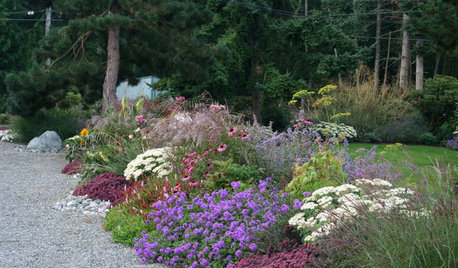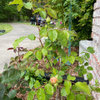Rose Rosette again and need Ann's advice
eaj09
16 years ago
Related Stories

GARDENING GUIDESLearn the Secret to Bigger and Better Roses
Grow beautiful roses using both ordinary and unusual soil amendments
Full Story
DOORSKnow Your House: Interior Door Parts and Styles
Learn all the possibilities for your doors, and you may never default to the standard six-panel again
Full Story
HOUZZ TV FAVORITESHouzz TV: See How Early Settlers Lived in This Restored Pilgrim House
Passionate restoration and preservation efforts give a 1665 home an honored place in the present
Full Story
MOST POPULARBlast Decluttering Roadblocks Once and for All
Change your thinking to get the streamlined, organized home of your dreams
Full Story
GARDENING GUIDES9 Self-Seeders Capture Chelsea Flower Show Magic
Give your garden show-worthy style with these plants beloved by top designers
Full Story
REMODELING GUIDESOriginal Home Details: What to Keep, What to Cast Off
Renovate an older home without regrets with this insight on the details worth preserving
Full Story
GARDENING GUIDESHouzz Call: What’s Your Favorite Backyard Beauty?
The simple, honest daisy is this writer’s go-to garden flower. We want to hear which plant, flowering or otherwise, gives you special joy
Full Story
HEALTHY HOMEHow to Babyproof Your Yard
Oh, baby, it’s a wild world. Make it safer for your young one with these strategies from a pro
Full Story
MOST POPULARHow to Design a Colorful Flower Bed
Fall planting: Delight the eye through 3 seasons with bright flowers placed just right. Late summer is the time to plan
Full Story
ECLECTIC HOMESHouzz Tour: Run-Down Victorian Gets a Manhattan-Style Makeover
A pre-earthquake Victorian in San Francisco is revitalized with a mix of modern and classic design and a healthy dose of NYC glam
Full Story





Jean Marion (z6a Idaho)
anntn6b
Related Discussions
Rose Rosette Strikes Again
Q
I think I have rose rosette disease on a rose.
Q
Knockout Roses--is this Rose Rosette Disease?
Q
Rose Rosette - Noooooo
Q
Jean Marion (z6a Idaho)
eaj09Original Author
patricianat
anntn6b
buford
carla17
eaj09Original Author
buford
sunnishine
len511
eaj09Original Author
Jean Marion (z6a Idaho)
anntn6b
eaj09Original Author
eaj09Original Author
anntn6b
len511